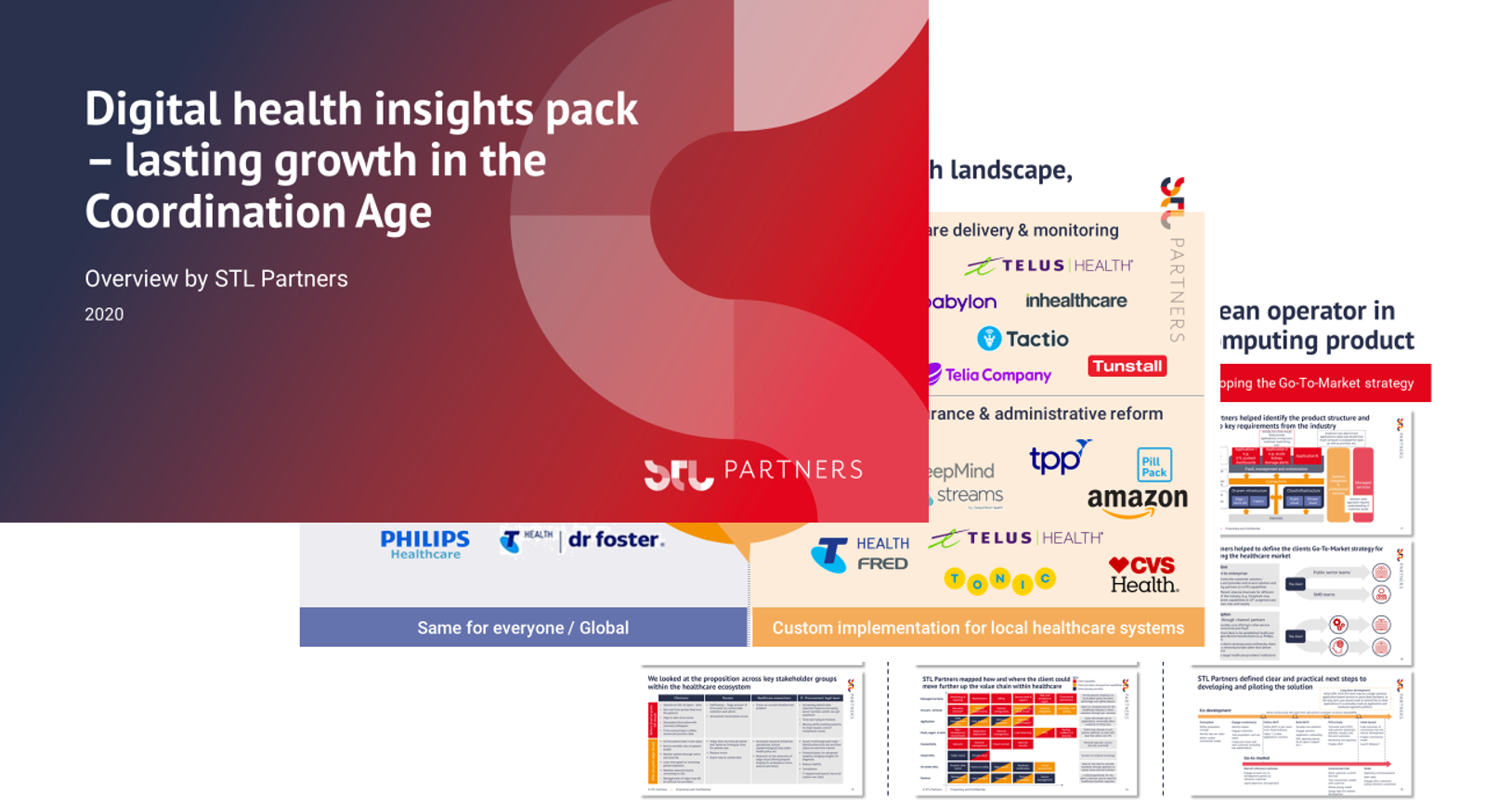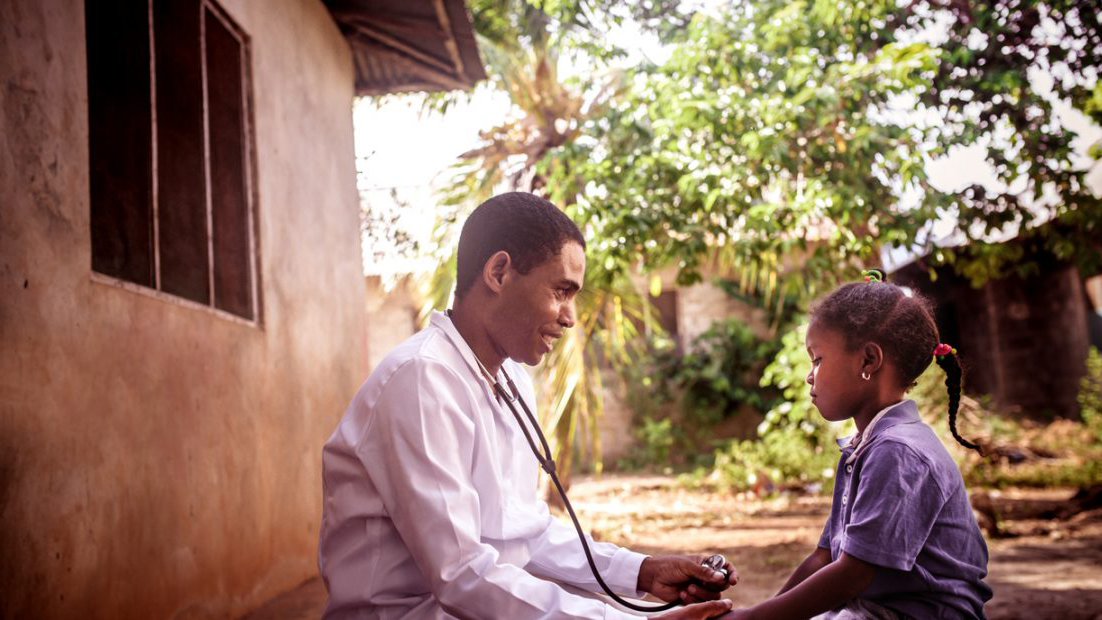How COVID-19 is changing digital health – and what it means for telcos
It is no secret that adoption of telehealth of all kinds has skyrocketed during the COVID-19 pandemic, as healthcare systems shifted to telephone and virtual care almost overnight wherever possible in order to lower the virus transmission rate.
In many countries, this has been enabled by temporary changes to regulations around usage and reimbursement for specific medical services. For example, in early March, the US passed policy to reimburse virtual consultations at the same price as in-person consultations for Medicare beneficiaries, covering around 60 million people. Similar regulation was implemented in Australia and South Korea.
The key applications of telehealth that can enable patients to receive care from home are:
- Phone consultations: often used in urgent care, for example when people call health helplines in the middle of the night or in emergency situations. Although this has its limitations, it is the most accessible form of telehealth.
- Video consultations: More versatile than phone consultations, as it enables clinicians to pick up on non-verbal cues and conduct some level of physical exam, but limited by the quality of patient’s device and their familiarity with technology.
- Diagnostics and triage: This includes contact tracing apps, AI-enabled diagnostic apps such as Ada Health and Babylon, which can make recommendations on next actions for patients, and clinician-to-clinician patient triage and referral based on patient records.
- Remote monitoring using wearables and other medical devices: Applied primarily to patients with chronic conditions, but also valuable for inpatient virtual care during the COVID-19 crisis, and outpatient care following a hospital stay for surgery or other treatment. These solutions can be delivered or prescribed by healthcare providers, or used directly by consumers. In the latter case, integration with EMR/EHRs is less likely and the value is therefore more limited.
As an example of the growth, Teladoc, a leading virtual care company in the US, reported that virtual visits on its system nearly doubled in Q1 2020 compared with the previous year. Given that the US only really began to escalate its response to COVID-19 in late February, we would expect even stronger growth for the Q2 starting in April 2020.
Teladoc virtual care visits were up 92% y-o-y in Q120

Source: Teladoc
However, as illustrated in the graphic below, published in the Journal of the American Medical Informatics Association, this is only the first phase of adapting our healthcare systems to cope with COVID-19. Following the initial shift to stay-at-home care wherever possible (Phase 1), hospitals have reorganised operations to also enable virtual inpatient care (Phase 2). In the next phase, whenever social distancing measures are relaxed, demand for virtual consultations is expected to fall, but there is likely to be a surge in demand from patients that have deferred treatment during peak COVID-19 (Phase 3).
Three phases of virtual care in response to COVID-19

Source: Journal of the American Medical Informatics Association, https://academic.oup.com/jamia/advance-article/doi/10.1093/jamia/ocaa067/5822868
To ensure that the digital health solutions COVID-19 has launched into mainstream use are sustainable over the long term, and really can reduce dependence on face-to-face care, they need to make healthcare easier for doctors and clinicians to deliver and easier for patients to access use.
As an example, although electronic medical/health records (EMRs/EHRs) have made it easier to track patient records, they have also required doctors and clinicians to spend hours logging patient information on IT systems after hours (see this interview with Carbon Health). To sustain the recent growth, digital health solution providers today need to think ahead about how to eliminate this type of friction, for instance by ensuring their solution has the ability to share patient data across systems and with patients themselves, can integrate with systems for population level data analysis, is accessible on existing consumer devices (e.g. smartphone, TV, smart speaker), etc.
The rise in investment flocking to this industry off the back of COVID-19 should fuel exactly the type of competition and innovation needed to develop telehealth solutions that improve both providers and patients’ experiences.
Key post-COVID-19 risks & opportunities
- Lack of enough clear proof of the value of various telehealth solutions, both in financial and health outcome terms, has been a key barrier to adoption and faster regulatory reform. With the surge in telehealth, the industry will be able to better understand when different solutions work well and when they don’t, providing the industry with critical information on how to tailor solutions more effectively to meet the needs of providers and patients. This is a key element to ensuring that adoption gains during COVID-19 are not lost once the risks of face-to-face medicine subside.
- Managing the “care debt” from deferred medical treatment or surgery during the peak of COVID-19 – especially with many hospitals reporting significant decreases in emergency visits, suggesting that many are postponing treatment, which could result in greater complications or health risks down the line
- Adoption of remote monitoring tools for outpatient management and better inpatient care, which can enable staff to effectively monitor many more patients at a time, could help to meet this surge more effectively
- Implementation of proactive care, using patient-facing diagnostic apps to understand which patients are deferring treatment, and triaging them to prioritise care once the COVID-19 peak is past
- Rapid licensing and deployment of digital health software doesn’t start with data protection by design, so there is often a lack of clarity around how private telehealth companies are using patient data. This does not necessarily mean patients’ health data, but browsing patterns on the internet before and after visiting a health service site, location data, etc.
- Often consumer-facing services are not held to the same standard as physician’s services, so in some markets, data stored in a personal health record but sourced from an EMR could potentially be used for marketing purposes1
- Studies indicate that current measures for de-identifying user data on physical activity measured with accelerometers in fitness wearables may not be robust enough – in a 2018 study by the National Health and Nutritional Examination Survey, 80% of children and 95% of adults were accurately reidentified using machine learning tools.
- To ensure that digital health solutions are sustainable and don’t face the same type of backlash the tech market as a whole has experienced over the last two years, regulations need to be clear and digital health companies need to be transparent about how they are using and securing patient and customer data.
What does this mean for telcos investing in digital health?
In a recent survey of telcos, vendors and other industry players, digital health came out as the vertical where respondents expected telcos to increase investment the most over the coming months. Even when broken down to the regional level, where there were significant differences in the perceived outlook for other verticals, there was a unanimously positive outlook for healthcare.
In every region telcos expect to increase investment in digital health solutions

Source: STL Partners survey on impact of COVID-19 on telco investments and priorities, 202 respondents, May 2020.
STL has long argued that healthcare is an attractive vertical for telcos – it is highly localised, starting from a comparatively low base in digitisation, and demand for healthcare is steadily rising. In short, it is a big and sustainable market, looking for local digitisation partners who will also be around for the long haul.
To successfully support their local healthcare systems’ transformation in the wake of COVID-19, telcos need to ensure that the solutions they help bring to the market meet both the immediate and long term needs of healthcare providers and patients. Some key considerations include:
- Ensure a high standard of data security for all solutions, whether developed internally or delivered with a partner
- Do not build your own solution if there is already a good one available in your own or another market. Instead, partner with digital health players to learn from their experience, and in turn help them widen their reach. A telco’s USPs are its existing brand awareness among consumers and enterprises and relationships in the public sector, not knowledge of how to solve healthcare challenges.
- If it’s not already done, have a clear roadmap of how data from your (or your partner’s) digital health solution will integrate with the wider healthcare system.
- Focus on solutions that are in line with the current level of healthcare digitisation. For example, if hospitals and GPs don’t have good EMR/EHRs, then there will be limited benefit to remote patient monitoring solutions since there will be nowhere to integrate and analyse the data.
- While you may offer solutions free or at a discount during the current crisis, have a clear view of who will pay for it over the long term (and how it will save them money or improve quality of care, or both). So far, the vast majority of telco initiatives rely on a B2B(2C/ 2Patient) business model, since few consumers are willing to pay out of pocket for healthcare. However, in some cases, such as in developing markets where public healthcare services are limited, or in elderly care where families are searching for cost effective and reliable ways to enable elderly parents to live independently, there may be growing scope for B2C business models. See STL Partners report Coordinating the care of the elderly for more detail.
What are telcos doing already?
In the vast majority of cases, telcos key health-related role during the COVID-19 crisis has been in support governments with population location data to support contact tracing programmes. However, some telcos have also launched or ramped up other services to support deliver of remote care and help manage strained healthcare resources. A couple of examples are:
- In Australia, Telstra is supporting ICUs in 191 hospitals to manage demand and availability for beds, protective equipment, respirators and dialysis machines through the Critical Health Resource Information System (CHRIS). The system was first developed in partnership with Ambulance Victoria, which has been using elements of the system in Victoria for several years. Telstra’s dedicated healthcare unit, Telstra Health, has also ramped up support for health agencies in going digital, for example by tracking all communications with care home residents and families through a single system called Message Manager.
- In the US, besides multiple efforts through the emergency response network FirstNet, AT&T has also partnered with virtual care company VitalTech to offer 60 days of free telehealth services to business customers such as hospitals.
- Dialog Axiata, the leading telecoms operator in Sri Lanka, has partnered with local telehealth company MyDoctor and Samsung to enable 16 hospitals to begin diagnosing and treating non-communicable disease patients remotely. Doctors are using Samsung tablets, loaded with MyDoctor’s app and powered by Dialog’s 4G network.
- In the Philippines, Globe Telecom has launched a chatbot that checks the health status of its 8,000 employees on a daily basis.
- When COVID-19 broke out, Hong Kong Telecom moved ahead the launch of its new virtual consultation app Dr Go, which is currently available to all PCCW and HKT employees in Hong Kong
Digital health insights pack
This 24-page document will provide you with a summary of insights from our healthcare research and consulting work:
- Key trends in the healthcare industry
- The role for telecoms: applications and business models
- Strategies for success: where to start
- How STL Partners can support you
Request the free digital health insights pack by clicking on button below:
![]()
Read more about digital health
Webinar
Telcos in health webinar
In this session Amy Cameron and Yesmean Luk looked at the opportunities for telcos in health. As a growing industry, with a national focus and significant digitisation challenges, healthcare is an attractive vertical for telcos seeking to build new revenues beyond core communications services.
Research
TELUS Health: Innovation leader case study
Healthcare is an attractive vertical for telcos to address with digital solutions. Although many telcos have made attempts to capture this opportunity, TELUS stands out as an example of the value of a long-term commitment to healthcare. In this case study, we examine TELUS’ strategy in health, evidence of its success, and draw out lessons for other telcos




